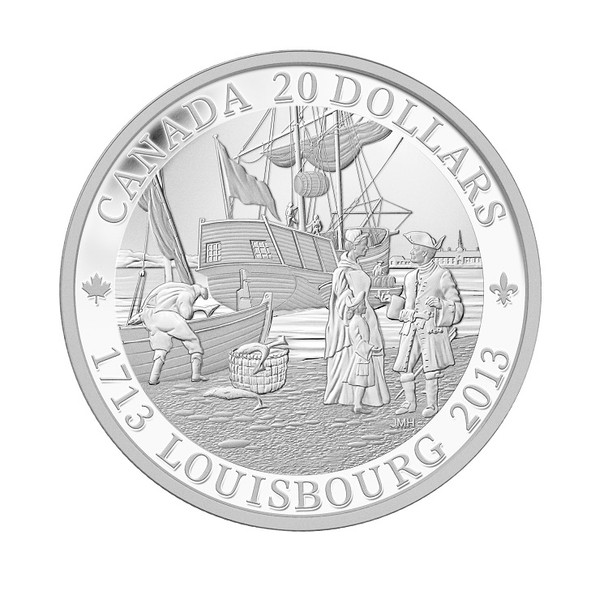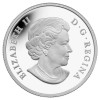Description
Theme:
Laying the foundation for a nation: The 300th Anniversary of Louisbourg
Description:
This $20 coin is certified to be 99.99% pure silver with a diameter of 40 millimetres and a metal weight of 31.60 grams. The reverse image by Canadian artist John Horton commemorates the 300th anniversary of the settlement of Louisbourg, and the community that developed there.
The reverse is engraved with the word “CANADA,” the double date “1713 Louisbourg 2013,” and the face value of “20 DOLLARS.” The edge lettering on the side of the coin reads “Louisbourg 300” and a repeating symbolic pattern of an anchor, fleur de lys, and maple leaf.
The obverse features the effigy of Her Majesty Queen Elizabeth II by Susanna Blunt.
Special Features:
- Beautifully detailed scene honouring this historic Canadian landmark.
- Large 40 mm silver coin with a unique edge lettering motif.
- Low mintage of only 8,500 coins worldwide.
- Perfect for collectors of Canadian history and silver.
Product Specifications:
Face Value: 20 dollars
Mintage: 8,500
Composition: 99.99% fine silver
Weight (g): 31.60
Diameter (mm): 40
Edge: Plain with edge lettering
Finish: Proof
Certificate: Serialized
Artist: John Horton
Advertising Date: June 4, 2013
Launch Date: June 11, 2013
Packaging:
Coin is encapsulated and presented in a Royal Canadian Mint-branded maroon clamshell case lined with flock and protected by a black sleeve.
Finished Size: 67 x 67 mm
Complete Certificate Text:
Laying the Foundation for a Nation: The 300th Anniversary of Louisbourg
During the first half of the 18th century, the fortified port of Louisbourg (in modern-day Cape Breton Island) was the centre of French power in the Atlantic region, and home to one of the largest military garrisons in New France. But while Louisbourg’s military exploits have been widely celebrated, the town was also one of the New World’s most important economic and cultural crossroads, and a major hub for fishing and trading ships from across the globe.
Louisbourg was initially founded by a small group of about 150 French colonists in the year 1713, after the signing of the Treaty of Utrecht. When Louisbourg was named the capital of the French colony of Île Royale, it wasn’t long before the modest settlement became a thriving community.
With its huge natural harbour, Louisbourg offered a vital link between the Atlantic Ocean’s lucrative Grand Banks fishery and the rich waterways of the St. Lawrence, the ports of western France and the Caribbean. By the early 1750s, just 40 years after it was founded, despite its siege and capture in 1745, the town’s population had grown to more than 4,000 people. At its peak, Louisbourg was one of the busiest ports on the continent.
The British captured Louisbourg in 1758, but abandoned it in 1768 in favour of Halifax. Nothing was left but a fishing village called Louisbourg ringing the harbour. In 1926, the French settlement and fortifications of Louisbourg and the sites associated with the sieges were declared a National Historic Site. In the 1960s, the original fortified town was partially rebuilt and given new life as a tourist attraction, where visitors can experience first-hand what life was like in New France in the 1740s.
The year 2013 marks the 300th anniversary of the founding of Louisbourg. Today, the Fortress of Louisbourg serves as both a model of world-class historic reconstruction and an enduring reminder of the essential role the settlement played in the development of Nova Scotia, and in helping to lay the foundation for the country that would one day be called Canada.













